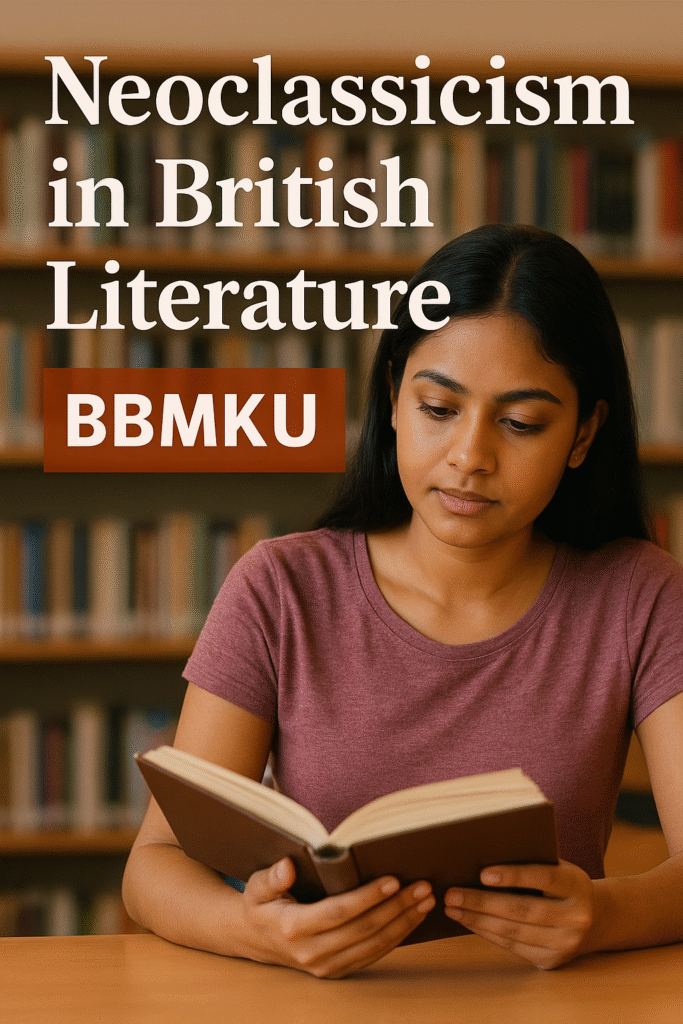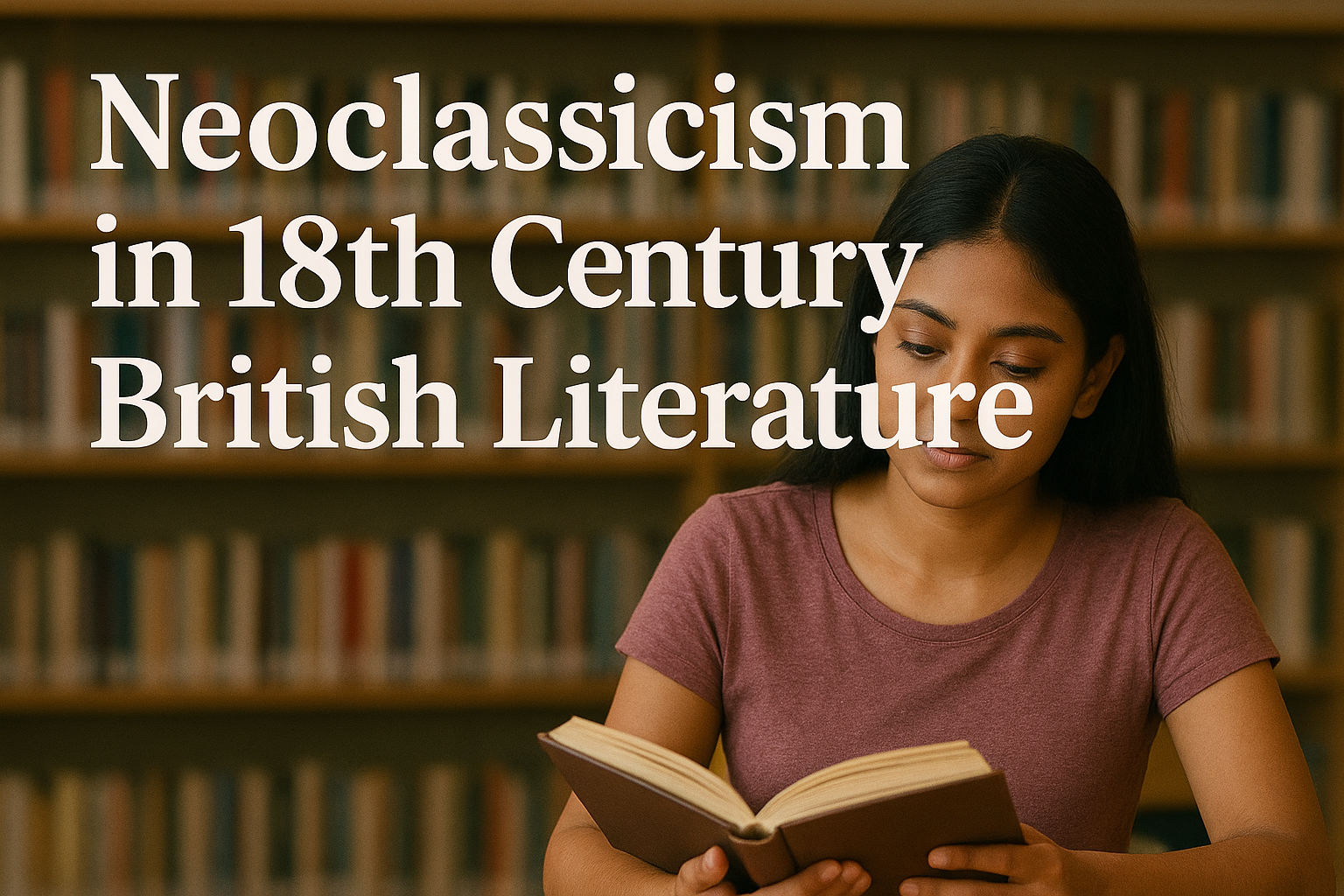The 18th century in British literature is known as the Age of Neoclassicism, a time when writers looked back to the ideals of ancient Greece and Rome. This period followed the chaos of the Renaissance and the English Civil War, promoting order, balance, logic, and reason. Neoclassicism in British literature became closely connected to the Age of Enlightenment, when reason and intellect were seen as the true guides of human life.
Meaning of Neoclassicism
The word “Neoclassicism” comes from “Neo” (new) and “Classicism” (the style of ancient classical writers). It refers to the revival of classical art, literature, and ideas in a new modern form. Neoclassical writers believed that literature should teach moral values and follow strict rules of style, clarity, and structure.
Historical Background
After the Restoration of Charles II in 1660, England entered a time of peace and stability. The growth of science, reason, and education gave rise to Enlightenment thinking. Writers began focusing on human nature, society, and logic rather than imagination or emotions.
This period (approximately 1660–1798) is often divided into three parts:
- Restoration Age (1660–1700) – John Dryden was the leading figure.
- Augustan Age (1700–1750) – Dominated by Alexander Pope and Jonathan Swift.
- Age of Johnson (1750–1798) – Marked by Samuel Johnson’s essays and dictionary.

Major Features of Neoclassicism
- Emphasis on reason and logic rather than feelings.
- Order and discipline in writing style and structure.
- Imitation of classical writers like Horace, Virgil, and Aristotle.
- Literature aimed to teach moral and social values.
- Focus on city life, manners, and politics.
- Use of satire to correct social and moral evils.
Major Writers and Their Works
John Dryden – Absalom and Achitophel, Mac Flecknoe (Father of English Criticism and Satire)
Alexander Pope – The Rape of the Lock, An Essay on Man (Master of heroic couplets)
Jonathan Swift – Gulliver’s Travels, A Modest Proposal (Used satire to expose human folly)
Samuel Johnson – The Rambler, A Dictionary of the English Language (Defined the intellectual spirit of the 18th century)
Addison and Steele – The Spectator, The Tatler (Introduced moral and social essays)
Neoclassicism and Enlightenment
Neoclassicism cannot be separated from the Age of Enlightenment. Both valued reason, order, and human progress. Enlightenment thinkers like John Locke and Isaac Newton inspired writers to see literature as a tool for rational discussion and moral reform.
Influence on British Literature
The Neoclassical age established literary standards that shaped English prose, poetry, and drama for generations. It emphasized clarity over complexity, intellect over imagination, and universal truths over personal emotions. Later poets like William Wordsworth reacted against this style, giving rise to Romanticism.
Conclusion
Neoclassicism in 18th-century British literature stands as a symbol of order, logic, and refinement. It connected art with intellect and society with morality. This movement not only defined the spirit of Enlightenment England but also laid the foundation for modern English literature.
Related Reading
Read more: The Age of Enlightenment – Based on British Literature (18th Century)

